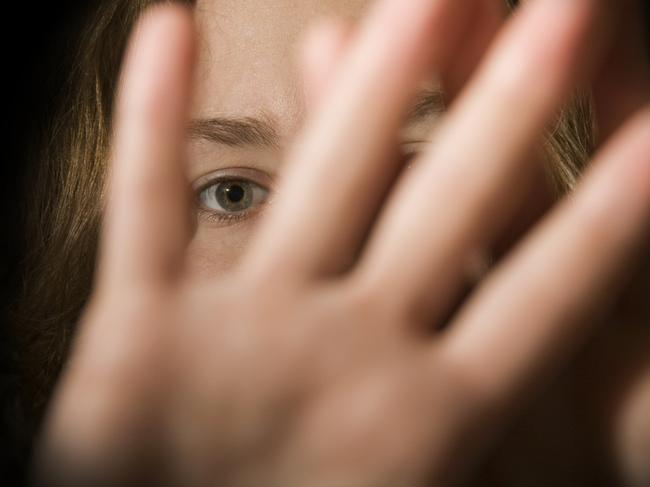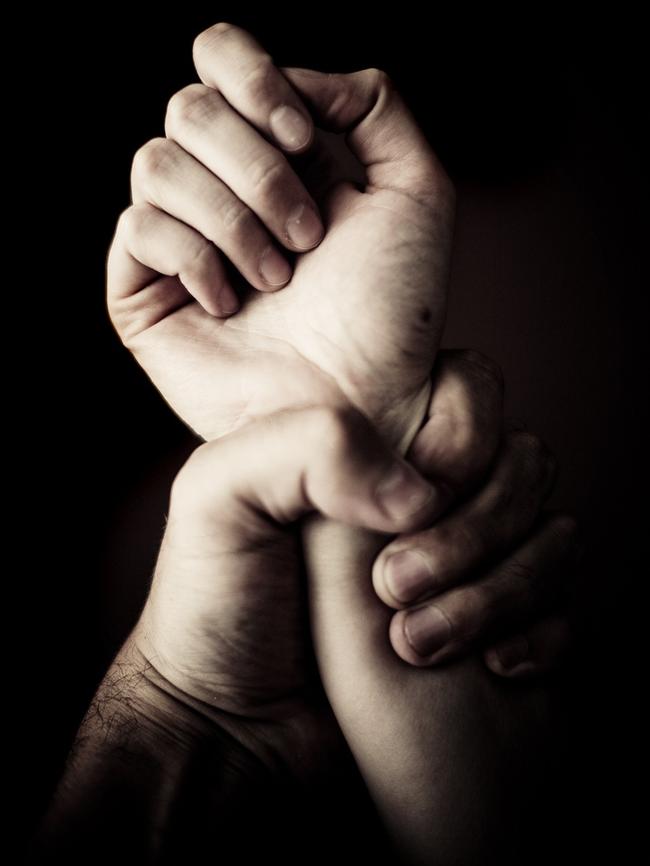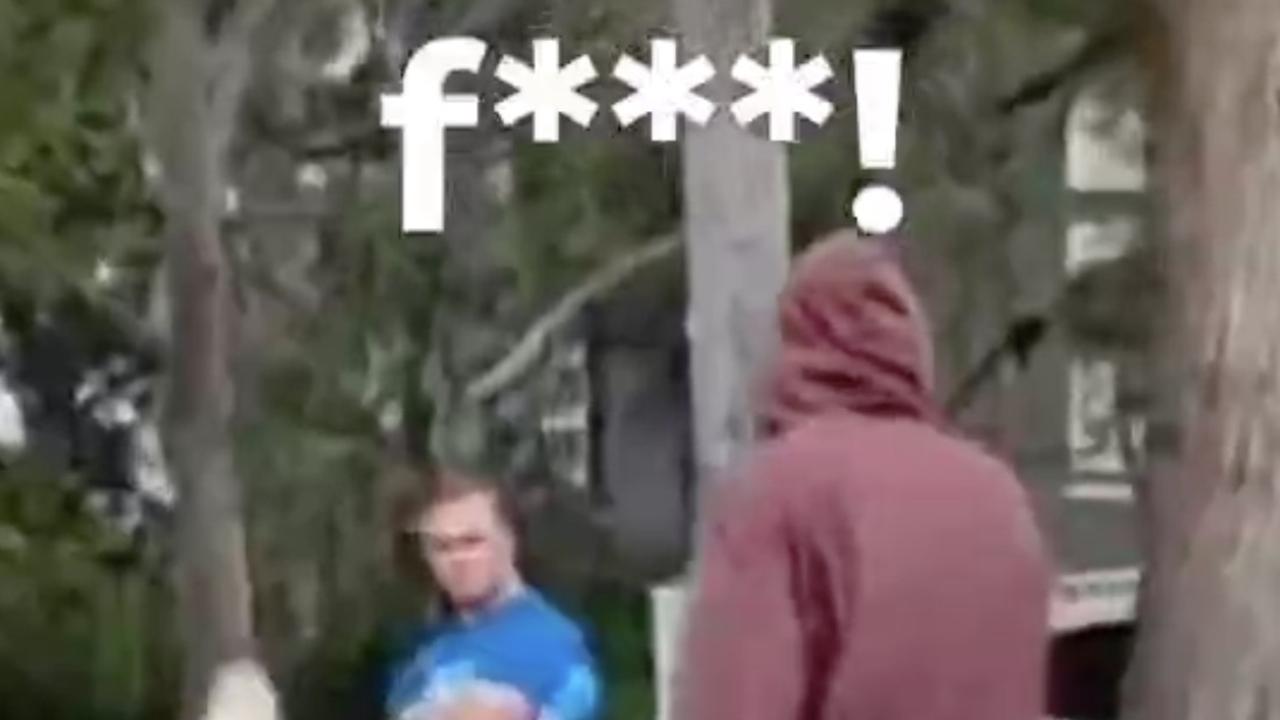Sydney woman documents domestic violence in online diary
A Sydney mum has documented the domestic violence abuse she suffered at the hands of her husband in a harrowing online diary, revealing incidents of broken bones, being punched in her sleep and having knives pulled on her.

NSW
Don't miss out on the headlines from NSW. Followed categories will be added to My News.
A Sydney mum has documented the domestic violence abuse she suffered at the hands of her husband, in a harrowing online diary.
The woman, who goes by the name Ella, tells of her experience of violence at the hands of her partner, which included “broken bones” and “visits to casualty” and normalised family violence, including being punched in her sleep and having knives pulled on her.
Ella describes her marriage as being riddled with her partner’s fits of rage and violence, spurred on by the seemingly regular minutiae of everyday life.
In one instance, he stamps on her feet for picking up a fork, in another, he locks her out of the house for using the “wrong” mop.

Her descriptions paint a picture of repeated and regular degradations.
As she struggles to appease her husband, her daughter Lauren is often by her side forced to witness the abuse.
“I get a flashback to getting my head stitched up after he hit me more than 10 years ago,” she writes in one post.
Over a lengthy period, Ella makes the decision to leave her violent and abusive partner, and is today free and safe.
The diary entries, which have been posted via an anonymised Twitter account, give an insight into the terrifying day-to-day existence of extreme family violence, where women are forced to choose between their family’s and their own safety.
Watched a movie on TV where a guy's in shock and getting medical treatment. I get a flashback to getting my head stitched up after he hit me more than 10 years ago. #Flashback #WhyIDidntReport
— Ella (@Ella65913170) September 25, 2018
Ella, who describes herself as a Christian in Sydney, says the account is a replay of her diary to help people understand what domestic violence is like.
“I’m thinking: What kind of thing would tell me that it’s time to go? What if he pulled a knife on me?” she muses in one entry.
“I’m reminded that this happened in the last week.”
RELATED STORIES
MAN CRITICAL AFTER TWO SHOT IN DOMESTIC DISPUTE
THREE DEAD IN FOUR DAYS OF DOMESTIC VIOLENCE
She describes a partner who was quick to anger, temperamental, unpredictable and cruelly violent. In one post, she describes him “[stabbing her] hands with a pen that was handy,” and punching her because the neighbours were having a loud party.
She readies herself financially, diverting her own pay from her job out of a shared account into a new bank account. She takes half the shared savings from her and her husband’s account.
Reading at the table. He turned the light off. Later he came back and hit me from behind in the dark. #dv
— Ella (@Ella65913170) August 30, 2017
As she prepares herself, Ella realises her daughter Lauren cannot come with her.
“It’s not getting any safer,” Ella writes, as she struggles with the idea of leaving just before Christmas.
“I understand why people don’t just walk out on their families now.”
On average in Australia, one woman is killed a week by her current or former partner.
But in 2018, the death toll has exceeded even that horrific toll, with 63 women dying in circumstances relating to family or domestic violence — a jump from 53 the year before.
The tally is kept by Counting Dead Women Australia researchers of Destroy The Joint, an
initiative undertaken by a team who have labelled the situation an epidemic.
Yesterday Australian communities banded together to observe White Ribbon Day, raising awareness of men’s violence against women.
For women like Ella, though, who have lived a life of suffering in silence, the day serves to remind the community of a problem that is often hidden.

Australian women also experience other types of violence at alarming rates. Of the women who are able to leave their abusive partners, 40 per cent will continue to suffer abuse at the hands of the same partners while temporarily separated.
One in four women have experienced emotional abuse at the hands of their partners, and one in five have experienced sexual violence.
One in six have also experienced stalking from the age of 15. It is estimated that the cost to the Australian economy is around $22 billion.
Caitlin Roper, from women’s group Collective Shout, says Ella’s story was sadly all too common.
“Domestic violence can take a range of forms, and it can include physical, emotional, sexual and financial abuse,” she adds.
“Ella’s account of domestic violence documents physical violence, threats, intimidation, humiliation and psychological punishment from a controlling man. Like many abusive men, her partner plays the victim and accuses her of being the aggressor, despite his regular threats and perpetration of violence against her.
“Many women face significant hurdles in attempting to leave a violent male partner. First, some women may not have an understanding of their situation as an abusive relationship.
“They may feel conflicted or even responsible for the abuse and struggle with feelings of shame, guilt and confusion, particularly if their partner is apologetic or assures her he loves her or he will change.

“Like Ella, they have to consider what will happen to their children, where they will live, and how they will support themselves.
“All of these things present serious barriers to getting out of a violent relationship.
“Even if women make a decision to leave the relationship, this is when they are most at risk, once their abuser realises he has lost control.”
Ella describes a process of engaging in couples therapy with her abusive partner, in a protracted attempt to heal the relationship and remove the toxic patterns in it.
“Today at counselling he gave a heartfelt apology,” she writes.
“He was sorry he had been violent and controlling. He knew it was wrong, but he did it anyway. This gave me hope for us.”
But throughout the diary entries, a pattern of gas lighting and doublespeak emerges.
From the outset, her therapist warns her of the possibility that the behaviour might never change.
Ella perseveres for two years in counselling with her partner while they are separated, but when he accuses her of being violent, she makes the decision to halt counselling.
Having left her partner, Ella describes being “thankful” for being able to sleep through the night without fear of her partner punching her.


